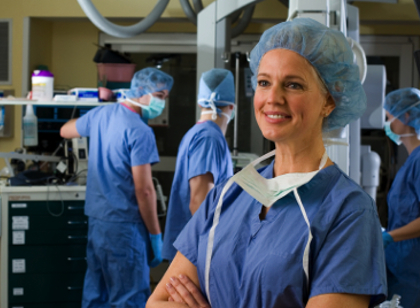LCL REPAIR
LCL Repair – Repairing Torn Lateral Collateral Ligaments
The lateral collateral ligament is a thin band of tissue along the outer side of the knee. It joins the thighbone (femur) to the fibula. (The fibula is the small bone of the lower leg that runs down the side of the knee to the ankle.) Like the medial collateral ligament, the lateral collateral ligament’s main job is to keep the knee stable as it moves.

Tears to the lateral collateral ligament most often occur from a direct blow to the inside of the knee. This can stretch the ligaments on the outside of the knee too far and may cause them to tear. This type of injury occurs in sports that require a lot of quick stops and turns such as soccer, basketball and skiing or ones where there are violent collisions such as football or hockey.
The ligament can also be injured by repeated stress that causes it to lose its normal elasticity. Most knee injuries are to the ligaments that support the knee, not the knee joint itself.
Surgical Treatment for Lateral Collateral Ligament Tears
If the lateral collateral ligament was torn where it attaches to the thighbone (femur) or shinbone (tibia), the surgeon will re-attach the ligament to the bone using large stitches or a metal bone staple.If the tear happened in the middle of the ligament, the surgeon will sew the torn ends together.
If the damage was severe and cannot be repaired, your surgeon may reconstruct a tendon by using a graft taken from a tendon of your thigh muscles (quadriceps) or your hamstrings.Lateral knee reconstruction is an open-knee procedure, and is not done arthroscopically. The tendon graft is passed through bone tunnels and fixed to the thighbone and lower leg bone (fibula) using screws or posts or with stitches tied around a post.
Non-surgical Treatment of Lateral Collateral Ligament Tears
Lateral collateral ligament tears do not heal quite as well as medial collateral ligament tears do. Grade 3 lateral collateral ligament tears may require surgery.In some cases, all that is required to complete the healing process is rest, wearing a brace, taking pain relievers such as ibuprofen and having physical therapy. Your doctor may recommend that you wear a lightweight cast or brace that allows your knee to move backward and forward but restricts side-to-side movement. This is usually worn 72 hours. Depending on how well it reduces your pain and swelling, you may be able to start a rehabilitative program in a few days.When the pain and swelling have gone down, you should be able to start exercises to restore strength and normal range of motion to your knee. If you are still having soreness while doing these exercises, proceed slowly to prevent further irritation. It may take anywhere from one to eight weeks to fully recover, depending on the grade of your injury.
